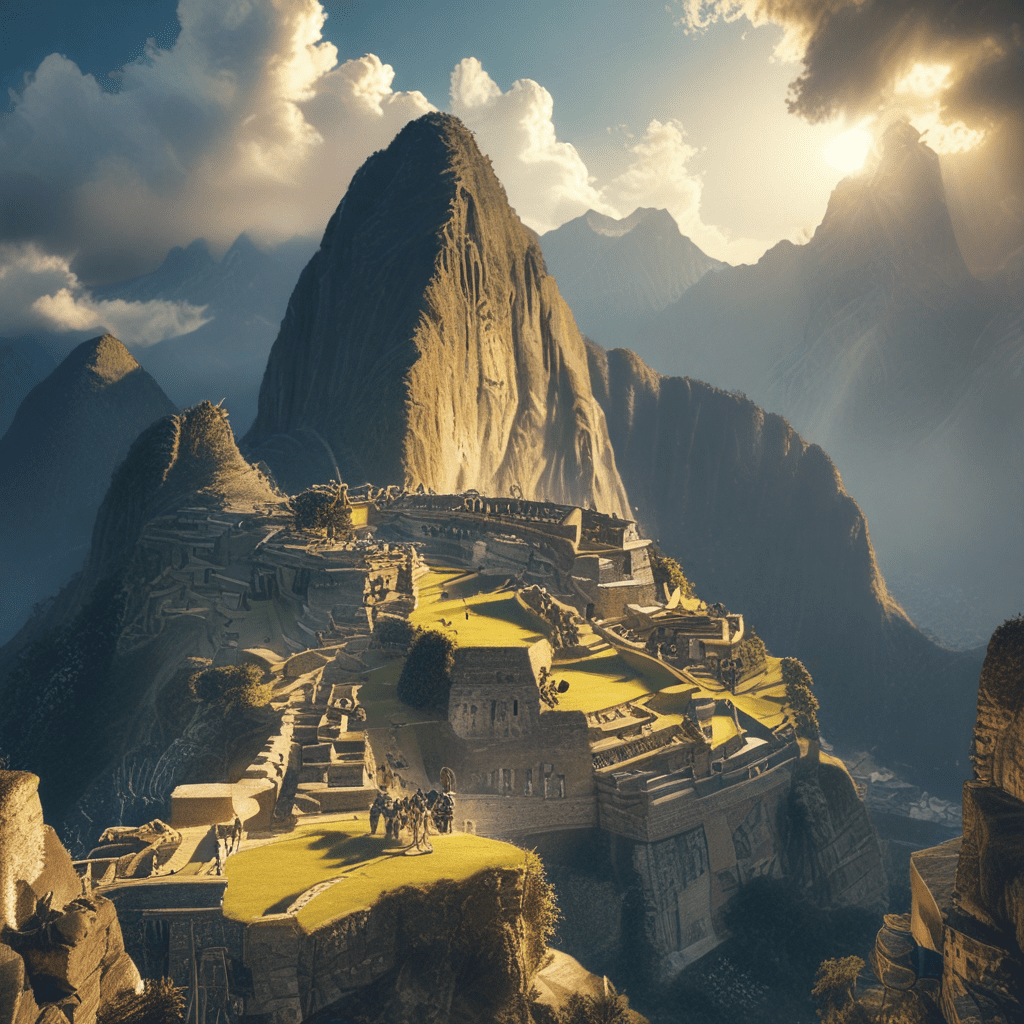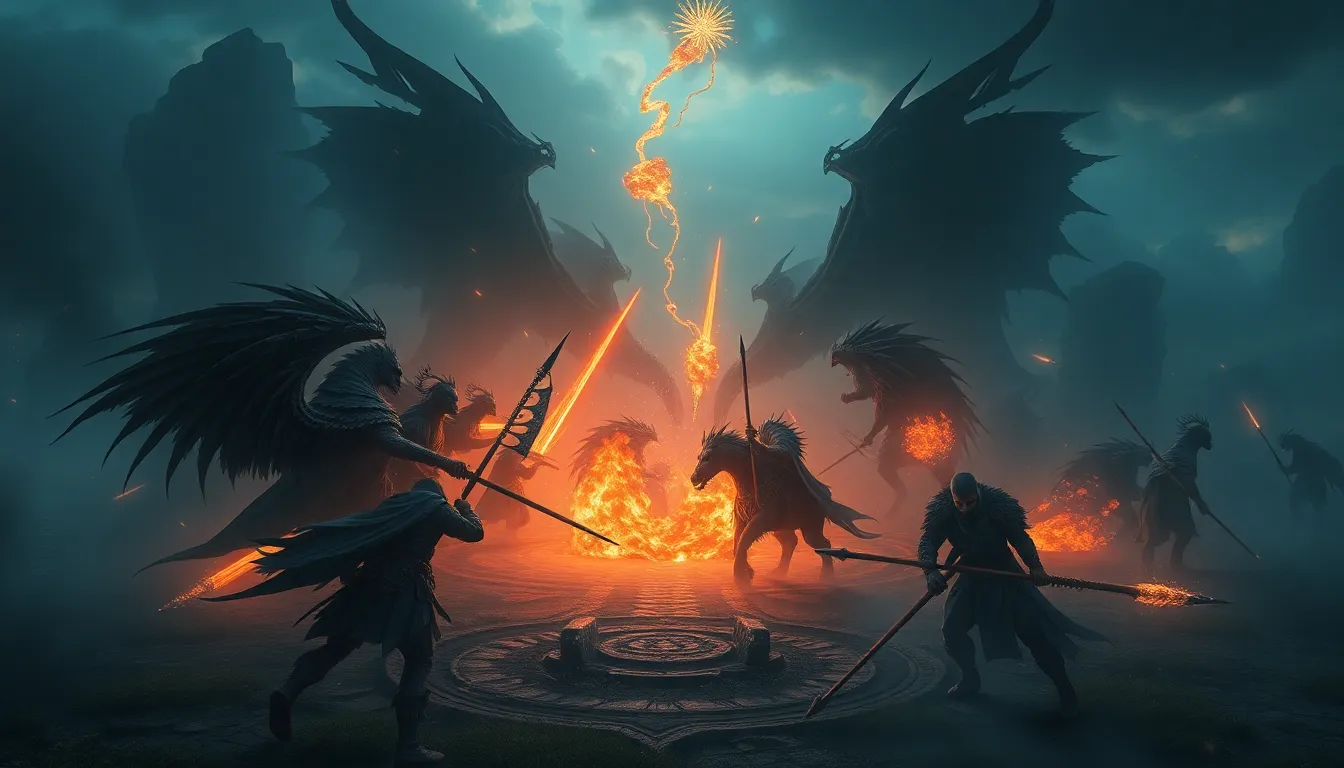The Forgotten Peaks: Myths of Mountains Lost to History
I. Introduction
Mountains have long held a significant place in the mythology and culture of civilizations around the world. From the lofty heights of the Himalayas to the rugged ranges of the Andes, these natural giants have inspired awe and reverence. They serve as backdrops for human stories and embody spiritual beliefs, often representing a bridge between the earthly and the divine.
This article aims to explore the forgotten peaks of the world and the myths that surround them. By delving into these lesser-known mountains, we can uncover the rich tapestry of narratives that have been woven into the fabric of human history. We will discuss notable peaks such as Mount Meru, Aztlán, and various lesser-known Himalayan mountains, revealing their significance in cultural lore.
II. The Allure of Forgotten Peaks
Forgotten peaks are mountains that, while not as prominent in contemporary culture, hold deep historical and mythological significance. These peaks have often been overshadowed by their more famous counterparts, yet they are rich with stories that reflect the values, fears, and aspirations of the cultures that revere them.
Mountains have played a crucial role in shaping human history and folklore. They serve as natural barriers, sacred spaces, and sources of sustenance, impacting the societies that inhabit their shadows. The connection between geography and myth-making is profound; mountains often symbolize strength, permanence, and the divine, influencing the narratives that arise around them.
III. Case Study: Mount Meru
Mount Meru is a significant peak in both Hindu and Buddhist traditions, often described as the center of all physical, metaphysical, and spiritual universes. In ancient texts, it is depicted as a cosmic mountain, surrounded by sacred rivers and home to the gods.
Mythological narratives surrounding Mount Meru portray it as the axis mundi, or the world axis, connecting the heavens, earth, and the underworld. It is considered the dwelling place of deities and a site of divine activity, making it a focal point for pilgrimage and spiritual exploration.
IV. The Enigma of Aztlán
Aztlán, often referred to as the ancestral home of the Aztec people, is shrouded in mystery and legend. Described in various historical texts, Aztlán is associated with a mythical mountain range, believed to be the origin of the Aztec migration to central Mexico.
Theories about Aztlán’s geographical location abound, with some suggesting it lies in the Pacific Northwest or the southwestern United States. Regardless of its location, Aztlán holds cultural significance in shaping Aztec identity, symbolizing origins, spirituality, and connection to the land.
V. The Lost Peaks of the Himalayas
The Himalayan region is home to many lesser-known peaks that are steeped in myth and legend. While Mount Everest and K2 dominate the conversation, smaller peaks like Kangchenjunga and Lhotse also carry rich stories.
- Kangchenjunga: Regarded as sacred by local communities, it is associated with various deities and legends.
- Makalu: Often seen as a challenging ascent, it represents the trials faced by those seeking enlightenment.
These mountains, while overshadowed by their more famous neighbors, contribute to the cultural heritage of the region, inspiring local folklore and attracting adventurers drawn to their beauty and mystery.
VI. The Myth of the Seven Sisters
The Seven Sisters, a group of mountains in the northeastern part of India, are rich in folklore and cultural significance. Each sister mountain is linked to various stories and legends that reflect the values and beliefs of the local tribes.
- Cultural Interpretations: The Seven Sisters are often seen as protectors of the land, embodying the spirits of ancestors.
- Regional Identity: These mountains play a crucial role in the cultural identity and unity of the tribes that inhabit the region.
The significance of the Seven Sisters extends beyond physical geography; they represent the intertwined nature of culture, spirituality, and the landscape.
VII. The Mystery of the Mountain of the Dead
In various cultures, mountains have been associated with death and the afterlife. One such peak, known colloquially as the Mountain of the Dead, is steeped in eerie legends and historical accounts.
Myths surrounding this mountain often reflect cultural implications of death, resurrection, and the journey of the soul. These stories have evolved over time, influencing local traditions and contributing to the mountain’s mystique.
VIII. The Role of Forgotten Peaks in Contemporary Culture
Modern storytelling has rekindled interest in forgotten mountains, bringing them back into the cultural consciousness through films, literature, and art. These mediums allow for a reimagining of these peaks, often highlighting their historical and mythological significance.
Tourism also plays a vital role in rediscovering these mythical sites, as adventurers and spiritual seekers venture to explore the stories that these mountains hold. This renewed interest can lead to greater awareness of their cultural heritage.
IX. The Importance of Preservation and Awareness
Despite their cultural significance, forgotten peaks face numerous challenges in the modern era, including environmental degradation and loss of cultural narratives. Local communities and organizations play a crucial role in preserving these myths and the natural landscapes they inhabit.
Awareness and appreciation of cultural heritage are essential for the survival of these stories. Efforts to educate others about the importance of these mountains can foster a deeper connection to both history and nature.
X. Conclusion
In exploring the myths and cultural significance of forgotten peaks, we uncover a rich tapestry of narratives that reflect the human experience. From Mount Meru to Aztlán and beyond, these mountains remind us of the profound connection between geography and mythology. As we remember and revive interest in these peaks, we also honor the diverse cultures and histories that have shaped our world.


